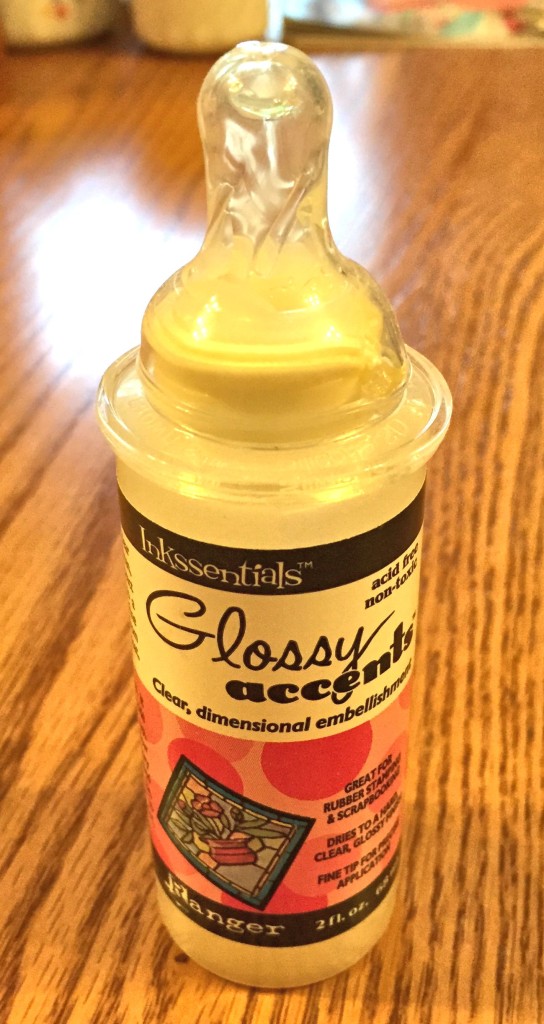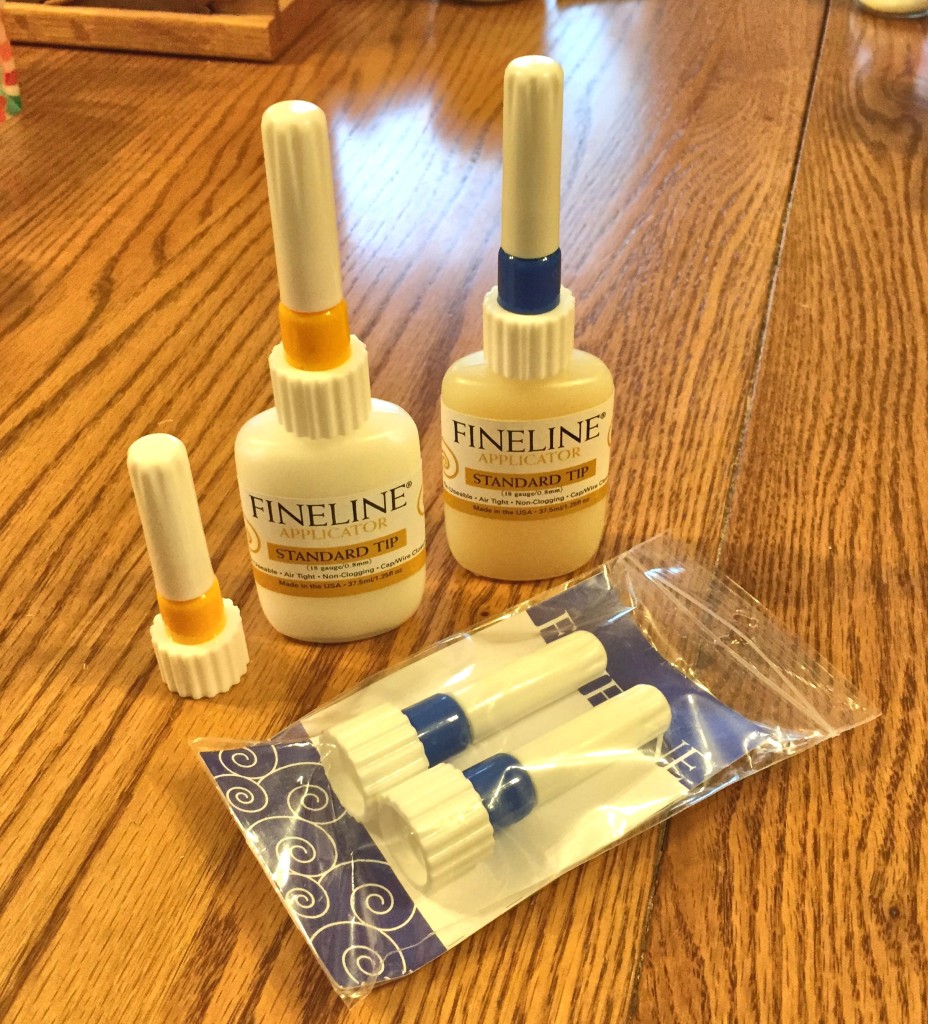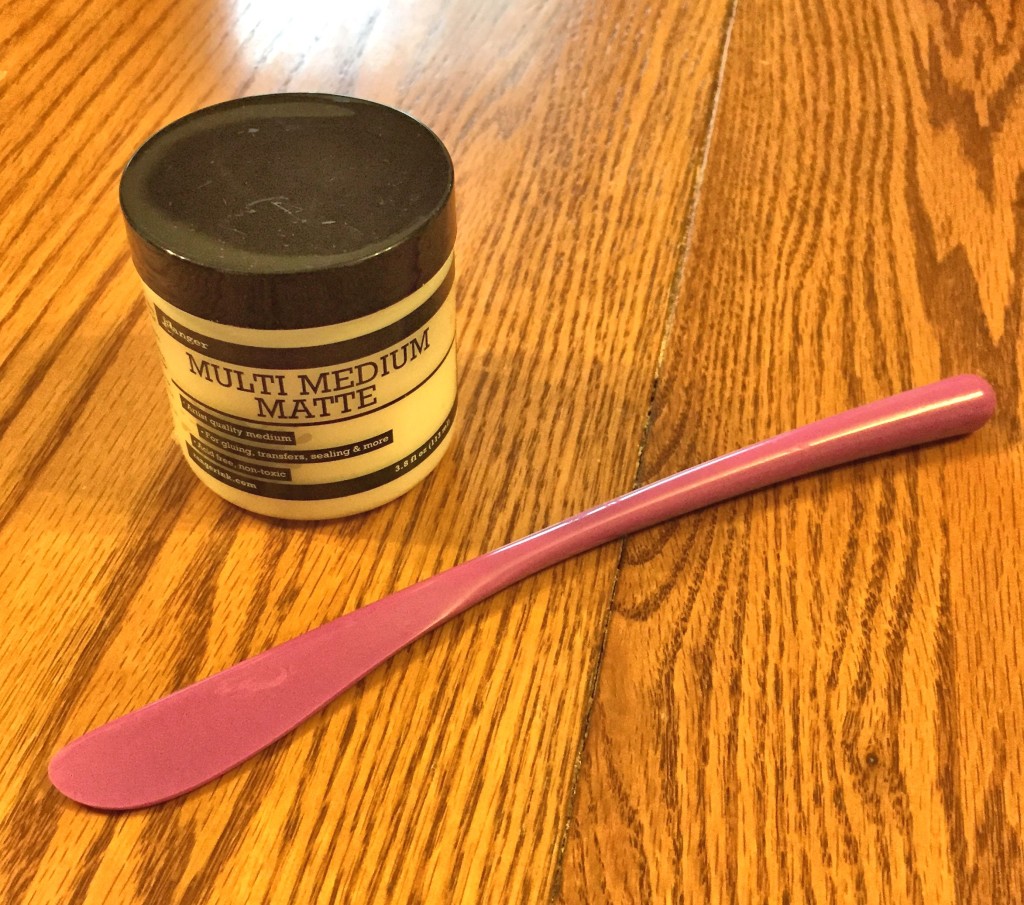I take it back. Baby bottle nipples may work as bottle toppers/applicators for some glues, but not all of them. In January I wrote a post, No more woes because of clogged bottle tips, about substituting baby bottle nipples for glue bottle toppers that had clogged or were apt to clog. This method was proposed by Laura Denison of Following the Paper Trail, who tested nipples over a period of several weeks and had great success with them. Based on her recommendations, I changed out two bottles, one containing Ranger Inkssentialsâ„¢ Glossy Accents, the other containing Scotch® Quick-Drying Tacky Glue. To prevent the liquid adhesives from drying out, you’re supposed to squeeze the bottle until a bead of glue emerges from the nipple tip, and then let that dry so that it acts as a stopper. So, what do I think about this type of glue bottle topper method today, several months later?
- I didn’t use my Scotch® Quick-Drying Tacky Glue for a few weeks, and the glue inside the nipple dried up completely. Not good. I am guessing that this would not have happened if I had used the glue more frequently, but in any event I won’t be using a baby bottle nipple topper for this type of glue again.
- The glue inside my Ranger Inkssentialsâ„¢ Glossy Accents bottle did not dry up, but it was difficult to use as a precision applicator. There’s a big difference in size between a fine applicator tip and a bulbous nipple.
Recently I watched a video, No-Clog Fine-Tip Liquid Glue Solutions, from Jennifer McGuire of Jennifer McGuire Ink, in which she describes several methods of keeping glue from clogging your bottle tips. Some of her methods cost nothing and are ingenious. Jennifer squeezes out excess glue from the bottle tip before she caps it, but she also “burps” her bottle so that the glue is driven downward into the bottle, instead of remaining in the applicator tip. I recommend you watch the video below to see how Jennifer burps the bottle.
She also uses a tip from Tim Holtz, who suggests using the plastic T-shaped “wire” that garment manufacturers attach to clothing tags. If you insert this into a glue bottle, it prevents the glue from drying out or staying in the applicator tip, and you don’t even need a cap. The next time I buy a garment, I’m saving this!
When I visited Memory Bound, my local scrapbooking store, one of the staff suggested that if you “stomp” the glue bottle down onto a flat surface, just once, this helps to prevent applicator tip clogging, too. I’ll have to try this. As we continued to discuss glue bottles tips and clogging, she steered me to one of Jennifer McGuire’s purchased solutions: Fineline Applicators. You can buy a package of two standard-sized applicators and matching bottles for around $9.99, and fill the bottles with your glue. You can also purchase a package of three fine-sized applicators for the same price, depending on how precise an application you need. What’s unique about this system is that the bottle topper consists of three parts: an applicator cap with a built-in solid wire (intended to push glue down into the bottle), a dispensing tip made of a thin, hollow tube, and a screw-on bottle cap. You hold the bottle either vertically or horizontally, just like a pencil, and squeeze the soft-plastic bottle. The standard-sized applicator has a yellow band, and the fine-sized applicator has a blue one. I will have to re-label these bottles so that I’ll know what’s inside them.
In some instances, you may be able to use the original bottle of glue and just replace its top with the Fineline one, but in my case the opening in the original bottles and the diameter of the Fineline bottle cap didn’t match. (What I needed was the 20-gauge version, not the 18-gauge one that I bought, so play close attention to the labeling.) As a result, I poured Glossy Accents into the bottle with the fine-sized applicator. My scrapbooking store didn’t carry Ranger Multi Medium in a bottle, so I bought a jar of this gelatinous substance, and scooped it out with a spreader to fill the Fineline Applicator bottle with the standard-sized applicator. This is one time I wished I had one of those plastic ice cream sampling spoons! With a little patience, however, it didn’t take too long to fill the 1.25 fluid ounce bottle. You can certainly use Ranger Multi Medium from a jar for collage purposes, but my intent is to use it as a glue for the layered paper flowers I make for book covers. Using the precision applicator, I can get into tiny spots between the petals.
Jennifer McGuire’s video discusses a few other liquid adhesive non-clogging applicator tip solutions that I’d like to try, but for now I’m checking out the Fineline Applicators. The bottle nipples are out, I think, at least for me. They can work for some glues and in some situations, but not for ones where great precision is needed. Do you have some other anti-clogging solutions for glue bottles not mentioned in this post or Jennifer’s video? I’d love to hear about them in the comments below.
© 2015 Judy Nolan. All rights reserved.




Sorry to hear about your disappointment with the baby bottle nipples. The fine line applicators look like a great solution. I don’t use much glue. I really like Roxanne’s Glue Baste-It for applique, but it is quite expensive, and I always have problems with clogging. Perhaps the Fineline applicators would work for that. I think a tiny drop of glue would be an easy way to hold a zipper in place before stitching, too. I’ve found pins and adhesive tapes a bit cumbersome.
Great post. Thanks, Judy!
Interesting idea with the garment tag bits. Shortly before he left, my husband was trying to put a pin in the top of a super glue bottle to accomplish basically the same thing! I was very supportive of the attempt because he keeps getting superglue all over my sewing pins when he uses them to clear bottle clogs.